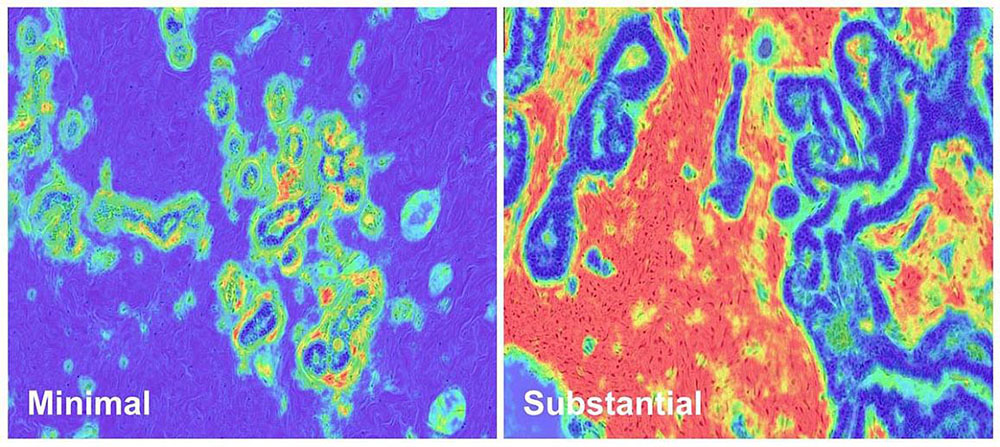IRP researchers discover tissue biomarker that may indicate higher risk of aggressive breast cancer development and death
Researchers at the National Institutes of Health (NIH) have identified a series of changes in the architecture and cell composition of connective tissues of the breast, known as stromal tissue, that is associated with an increased risk of developing aggressive breast cancer among women with benign breast disease, and poorer rates of survival among women with invasive breast cancer. This process, which they call stromal disruption, could potentially be used as a biomarker to identify women with benign breast disease who are at high risk of developing aggressive breast cancers, as well as those with breast cancer who may be at increased risk of recurrence or death.
Such insights could help inform the development of cancer prevention and treatment strategies that target the stromal microenvironment. In addition, stromal disruption is inexpensive to assess and could be widely adopted, particularly in low-resource settings where molecular analysis is impractical or very expensive.
In the study, the researchers used machine learning to detect subtle changes in the stroma of 4,023 donated samples of healthy breast tissue, 974 biopsies of tissue with benign breast disease, and 4,223 biopsies of tissue with invasive breast cancer.

Slides showing minimal disruption (left) and substantial disruption (right) in breast stromal tissue.
This page was last updated on Wednesday, May 14, 2025